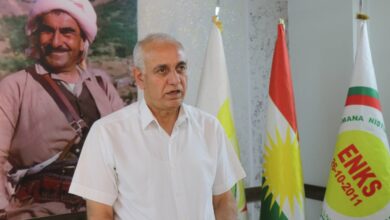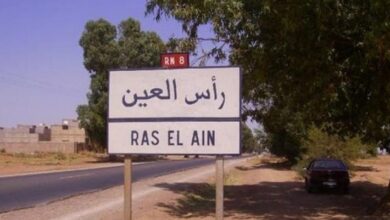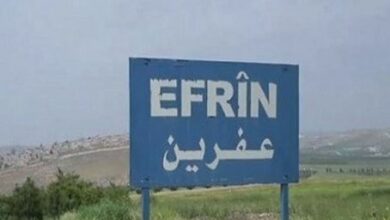The Thirst for Revenge Threatens to Destroy Iraq
In October, I met dozens of families huddled in the hillsides around Amerli, a town of some 26,000 people 110 miles north of Baghdad. They had sought shelter there, helplessly watching as their homes burned and exploded in the weeks and months after government-backed Shiite militias took control of their villages, after expelling fighters from the Islamic State.
What they told me bears striking — and disturbing — similarity to what is happening in Tikrit right now, as Iraqi security forces and Shiite militias attempt to retake the city from the Islamic State with the support of U.S. airstrikes. Iraqi forces and militia fighters captured almost the entire city by Wednesday night, as Prime Minister Haider al-Abadi arrived to cheer the conquest and Defense Minister Khaled al-Obeidi hailed the “magnificent victory” there.
While we don’t know exactly how events in Tikrit will play out, we do know how the operation last summer ended in Amerli, which had been under siege for three months. In that battle, Iraqi authorities, along with U.S. and coalition forces, turned a blind eye to the abusive conduct of Shiite militias after the Islamic State abandoned the area. The apparent indifference of the United States and coalition forces paved the way for a wave of destruction, as the militias targeted Sunni Arabs and other minorities in the surrounding area.
Our research on the operations around Amerli revealed how the operation to clear and secure a 300-mile area around the town quickly morphed into a campaign of revenge attacks. Pro-government militias and volunteer fighters, along with Iraqi security forces, purposefully burned Sunni villages to the ground, destroyed homes with explosives, and looted entire villages, leaving them virtually uninhabitable.
Under the guise of fighting the Islamic State, the marauding militiamen waged their own sectarian war with complete impunity. While Amerli is a Shiite Turkoman village, the majority of the surrounding villages were home to Sunni Arabs and several mixed Arab and Turkoman communities that the militias accuse of being Islamic State collaborators and sympathizers. The families from these surrounding villages told me that the militias drove them from their homes — and in the days after my visit, reports continued to flow in from desperate families describing how militiamen took away their brothers and sons and destroyed more of their homes. These were families caught between the horrors of the Islamic State and the vengeance of out-of-control Shiite militias.
An analysis of satellite imagery of over 300 square miles of land surrounding Amerli found that 30 out of 35 villages in the area showed indications of arson and purposeful building demolition, after these forces cleared out the Islamic State fighters. In one of the worst examples, 95 percent of the town of Hufriyah, 11 miles from Amerli, showed signs of destruction. All of the destruction took place while the town was under militia control.
In the last week, I have been struck with an overwhelming sense of déja vu, as once again my phone rings and my inbox fills up with reports of more abuses. Only the location has changed — this time, they are from Tikrit. I read frantic emails filled with the names of Sunni family members taken away by militias who act as judge and jury, accusing Sunni men of being Islamic State sympathizers. Within the first week of the Tikrit operation, residents told me militias attacked and destroyed their homes and orchards on the eastern outskirts of the city. A satellite image of the area from the same period showed large clouds of smoke rising from the burning farmlands.
Until recently, the offensive to take Tikrit back from the Islamic State was being led by the militias and the pro-government Hashd al-Shaabi (Popular Mobilization Committees), with the support of Iranian military commanders. After the offensive stalled, U.S. and coalition warplanes on March 25 started striking Islamic State positions in and around Tikrit at the request of the Iraqi government.
The U.S. strikes to push back the Islamic State are intended to make way for Iraqi troops — and likely the militias who fight alongside them. Gen. Lloyd Austin, head of U.S. Central Command, recently told the Senate Armed Services Committee that the militias are “not a part of the clearing operation,” despite tens of thousands of militias still operating on the front lines. The question now is: Will the aftermath of Tikrit look like the aftermath of Amerli?
The thirst for revenge in Tikrit, unfortunately, runs deep. Last July, Islamic State fighters massacred more than 1,000 captured Iraqi soldiers when they took control of the city, marching them from the nearby Speicher military base to their deaths in Tikrit city. According to the Iraqi government, the soldiers were mostly Shiites, many of them relatively new recruits. With images of the massacre still fresh in people’s minds, the potential for the militias and Iraqi government forces to settle the score and engage in revenge killings is high. Hadi al-Amiri, the commander of one of the largest militia groups, the Badr Corps, which is participating in the current offensive, even referred to the Tikrit operations as “the battle for the revenge of Speicher.”
The Iraqi government has taken no concrete steps to hold accountable security forces or militia leaders who allow their fighters to run amok and commit war crimes. Iraqi Prime Minister Haider al-Abadi has voiced his concern about the conduct of the militias. He has called for investigations, and for those committing abuses to be held responsible. However, the reality of Iraq’s deeply divided political landscape means that Abadi is not in control of the dozens of different militias that make up the backbone of the fight against the Islamic State. After more than a decade of operating with complete impunity, they have become a law unto themselves.
The potential for vengeance in Tikrit is not news to any of the parties involved in fighting the Islamic State in Iraq. The facts on the ground are that coalition members supporting the Iraqi security forces are most likely taking part in operations with a strong contingent of militias, and they risk complicity in war crimes by engaging alongside forces that commit serious abuses.
The question is whether anything will be done to stop this. The time to answer that question and take action is now.
The United States, as well as other governments participating in this operation, can help stop the vicious cycle of sectarian-fueled violence. Secretary of State John Kerry and Gen. John Allen, the U.S. special envoy to the anti-Islamic State coalition, have made notable comments in recent weeks about the need for those fighting in Iraq not to commit acts of revenge and abuse against civilians. These statements need to be backed up with concrete action.
The armed conflict in Iraq is messy, but how it is conducted will have long-term implications for the future of the country. It’s important for the United States not to allow the fighting to become a cover for Iraq to slip further into a cycle of sectarian-driven revenge violence. Looking the other way while abuses occur is not just bad for those who suffer now — it will be catastrophic for Iraq’s future.
hrw.org




